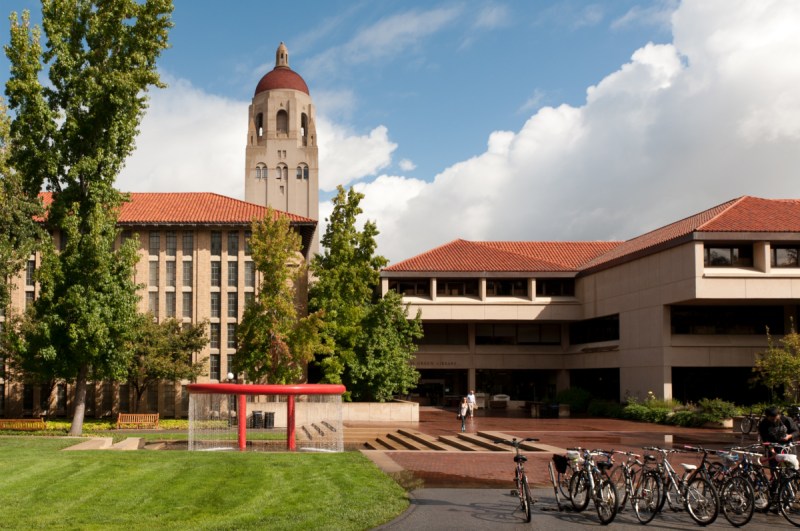With the start of each quarter comes the periodic tradition to open Explore Courses, compare course ratings, and chart out the optimal schedule. And with the end of each quarter comes the filling out of course reviews on Axess. We choose some courses because they are requirements, others out of interest, and some just because our friends are taking them! Tools like FastCourses.org become invaluable since they provide students information on previous ratings and reviews to inform and improve their choices. In this article, we will take a look at Stanford’s highest rated courses within and across departments.
The data on course ratings in this article was provided by FastCourses.org, and it is the same set of ratings found on the Carta website. We analyzed the course ratings for every course in each department. One issue in comparing course ratings is some courses have many more reviews than others. In a course with fewer reviews, the given rating is less likely to represent the true rating for that course so we recalculated the ratings to incorporate information about other courses in a given department using a Bayesian ranking. For example, there is not a direct baseline for comparing a course with a rating of 4.5 over 10 reviews against a course with a rating of 4 over 100 reviews. (Please see the Methodology section for more information.) We also only looked at courses that had at least 10 reviews.
Although Stanford cross-lists the same course under multiple numbers, Fast Courses only provides data for one of those courses. For example, the course “Rivers, Streams, and Canals” is listed as both CEE 262E and CEE 162E, but Fast Courses only provides data for CEE 262E. Scroll through the table below to see the five highest rated courses in departments with at least five courses that were each reviewed by at least 10 students.
Per ExploreCourses, Stanford does not have a uniform course-numbering system. However, courses numbered 1 to 99 are generally aimed at freshmen and sophomores, courses numbered 100 to 199 are geared towards juniors and seniors, and courses numbered 200 and above are primarily for a mix of juniors, seniors, and graduate students.
While this does not provide a definitive classification, it is clear that most courses in the top five per department have greater course numbers. Students seem to enjoy courses in specific advanced topics rather than those that focus on the broader introduction. This makes sense given that students taking courses in advanced topics are likely to be majoring in that field or show high interest already.
Reviews for top classes show the excitement that they bring to Stanford students. Refrains of “take it!” fill the reviews of the highest rated English class, “Creative Nonfiction.” Students of ECON 137 guarantee you will learn lots of real-world material in the course. Fans of CS 140 emphasize the high reward of the work in the class.
In the table above, we also looked at the top 10 highest-rated departments. This was ranked based on a weighted average of original course ratings (not recalculated) over the number of reviews per course. Departments needed to have at least five courses with at least 10 reviews each to be considered. Stanford’s language and study abroad programs are well-received. Standard deviation represents the variability of course ratings within each department. The small numbers indicate that individual course ratings are close to the average rating for the department.
As with any ratings system, the results must be taken with a grain of salt. Students are more likely to rate a course if they have strong feelings about it, either positive or negative. Furthermore, Stanford provides an incentive to students to fill out ratings at the end of a quarter so they can get grades as soon as soon as a professor releases them (rather than waiting until a period after the quarter ends). This could lead students to put little thought into how they rate courses in order to see grades. Lastly, ratings suffer from some amount of selection bias — students tend to take classes they expect to like, so we shouldn’t necessarily expect a class with high ratings to be universally liked by the rest of the student body.
However, analyzing course ratings data can still offer insight into what past students think about certain courses, and what students think about departments as a whole. For students continuing to explore at the introductory level of many departments, the results show that the classes get better with more experience. The results seem to support learning a new language or studying in a different country. Hopefully the results of this analysis will uncover hidden gems across the University that are worth taking a look at.
I would like to give a huge thank you Theo Patt and FastCourses.org for providing the data!
Methodology
The weighted average, which was used for both inter-department and intra-department ratings, was calculated by multiplying each course’s rating by the number of reviews it had, summing this up for all courses in the department, and then dividing by the number of ratings in the department. Standard deviation was calculated through a weighted calculation, where the weights were the number of ratings for a particular course.
For recalculating the ratings within a department, a modified Bayesian rating was calculated for each course. This formula effectively augments the ratings for each course with a certain number (in our case 10) of additional ratings equal to the weighted average for the department. Using this formula pulls the ratings of courses with a small number of initial ratings towards the weighted average for the department, while the recalculated ratings for courses with many ratings will be close to their initial values. If you have little information, it is a standard technique to go with your priors. This technique provided us with a way to compare courses with a drastically different number of ratings.
Contact Sophie Andrews at at sophie1 ‘at’ stanford.edu.
